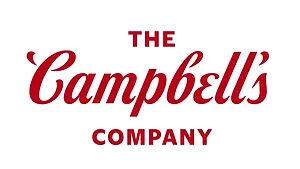FOOD ENGINEERING’s Top 10 New Plant Products of 2023
December 28, 2023.webp?height=334&t=1704199019&width=640)
FOOD ENGINEERING’s Top 10 New Plant Products of 2023
December 28, 2023
Image courtesy of Emerson
New Software-Defined Automation Architecture
Emerson’s new software-defined automation architecture utilizes “boundless automation” to manage, connect and deliver operational technology (OT) and information technology (IT) data across the enterprise. Moving data freely and securely across OT and IT domains—from the intelligent field to the edge and cloud—will reportedly enable operational and business performance optimization across the enterprise.
Leveraging automation requires secure OT data access to put data to work across layers to optimize process, reliability, safety and sustainability simultaneously. New technologies and applications combined with market needs—including “born digital” companies, decentralized operating models and the move toward self-optimized plants—have created a demand for a new automation paradigm where a unified software environment streams data across the enterprise effortlessly, when and where it’s needed.
This software-defined, data-centric and app-enabled architecture from Emerson will reportedly “democratize” data. The automation architecture will gather data from devices and modern edge-based technology control systems and move it to today’s cloud-based enterprise for analysis, trending and forecasting—enabling collaboration between information technology and OT, Emerson explains.

Image courtesy of KUKA Robotics
KUKA Robotics’ Mobile Robot
KUKA Robotics’ KMP 600-S diffDrive mobile robot works in unison with a KR IONTEC robot in a Mujin cell for palletizing and depalletizing consumer goods.
With an operating speed of up to two meters per second, the KUKA KMP 600-S diffDrive mobile platform automated guided vehicle (AGV) system uses laser scanners and 3D object detection to meet safety requirements. Its payload capacity is up to 600 kg, and the vehicle requires no safety fencing. Laser scanners are mounted at the front and rear for safe operation at high speeds when cycle times require it.
For automated palletizing/depalletizing, KUKA Robotics' KR IONTEC medium payload robot is designed for industrial applications including handling, packing and palletizing.
Looking for a reprint of this article?
From high-res PDFs to custom plaques, order your copy today!
For use on the floor, on the wall or inclined, the KR IONTEC is equipped with a waterproof and dustproof in-line wrist and protected motors for use in production areas.

Image courtesy of Heatcraft Refrigeration Products
Heatcraft and Honeywell’s Low GWP Refrigeration Solutions
Heatcraft Refrigeration Products is currently developing new walk-in unit coolers, condensing units and condensers for supermarkets and retailers that operate using Honeywell Solstice L40X(R-455A). Solstice L40X is a commercial refrigeration solution that’s an energy-efficient hydrofluoroolenfin (HFO) blend solution reported to have a low global warming potential (GWP).
Honeywell states that retailers are able to remain compliant with hydroflurocarbon (HFC) phase-down requirements and contribute to sustainability goals due to the refrigerant’s GWP being below 150. Reportedly this solution has the highest capacity and largest charge size of any A2L refrigerant with a GWP less than 150, meaning it has a lower run-time ratio and greater architecture flexibility, which can lower its total costs.
In April, 2021 Honeywell pledged to achieve carbon neutrality in its operations and facilities by 2035. It has also shown public support of the Paris Climate Agreement. Recently, it has announced more sustainability commitments which includes cooperation with Science Based Targets initiative (SBTi) to set a science-based target scoping 3 emissions and participating in the U.S. Department of Energy’s Better Climate Challenge.

Image courtesy of SPX FLOW
APV Membrane Filtration for Plant-Based Products
SPX FLOW, Inc.’s technology for plant-based concentration using APV membrane filtration to provide clean label products of higher nutritional value. Benefits include a greater yield, higher single-source protein content and a more sustainable process compared to traditional methods using evaporation and chemicals, according to the company.
The APV membrane filtration technology features solutions designed to fit various plant sources, including soy, oat, nut, rice, pea and more. The solutions, designed based on processing needs, include process filtration like microfiltration and ultrafiltration for fractionation, concentration, and standardization of plant protein. Additionally, nanofiltration and reverse osmosis systems are available for solids concentration, valorization of subproduct, and water recovery.
The traditional plant-based concentration involves chemicals or evaporation and can result in a significant loss of proteins. SPX FLOW says its specialized membrane systems allow gentle separation and concentration of product proteins without damage and less than 1% loss. This process also means fewer filler ingredients to maintain the nutritional value of a plant-based product.

Image courtesy of Markus Spiske on Unsplash
UNISOT’s nChain Solution to End Food Fraud
Blockchain-powered track and trace solutions from UNISOT are designed tobring traceability and transparency to every step of the supply chain via digital product passports (DPP). The DPP provides information from raw materials, components, manufacturing locations, cold chain integrity, accreditation, certifications, carbon footprint and waste recycling—compiled from the various actors across a supply chain—to both manufacturers and end users. Accessed through a QR code, the company says the DPP helps consumers to make better-informed purchase decisions and offers the opportunity for supplies to demonstrate greater accountability.
UNISOT’s solution is powered by nChain blockchain technology. This enables the company to expediently roll out the application globally. This is made possible due to the scalability, integrity, availability, efficiency and stability, states UNISOT.
The nChain platform reportedly enables manufacturers to fulfil legal and ethical requirements—compliance with EC Corporate Sustainability Due Diligence (CSDD) rules, the Digital Product Passport (DPP), and the EC Ecodesign for Sustainable Products Regulation (ESPR), proposed and obligated by the European Commission to promote transparency. According to the EC, these regulations will impact the majority of European food businesses, as customers demand more sustainable and informed choices in the coming years.

Image courtesy of Ecolab
Digital Platform to Simplify Food Safety & Quality Management
Ecolab has launched Food Safety and Quality (FSQ) Supervisor, a web-based platform designed exclusively for food and beverage manufacturing to gather and report food safety & quality (FS&Q) data.
Ecolab FSQ Supervisor Platform is designed to simplify food safety and quality for food and beverage manufacturers by turning manual FS&Q data collection into proactive issue mitigation and actionable insights. The outcome-driven platform reportedly enables F&B manufacturers to use their FS&Q data to increase sellable product, reduce testing costs, mitigate recall risks and streamline regulatory compliance.
FSQ Supervisor provides food and beverage producers with actionable decision-making insights across the entire food and beverage process in one web-based system:
- Environmental Monitoring: Records sampling and testing
- Test Point Management: Provides automated alerts for adhering to testing standards
- Interactive Dashboards: Shares relevant analytics with authorized users
- SOP Management: Provides instructions for critical control points
- Cleaning Verification: Ensures observance of methods, procedures and tests
- Reporting: Allows automation of internal and audit and quality reporting
- Floorplan Visibility: Offers an interactive, birds-eye-view of sample points
- Strong Security: Ensures that only authorized users have access to data and insights they need to perform their jobs
The modular platform allows users to selectively deploy a phased approach to simplify digital transformation and align with existing workflows.

Image courtesy of Fluke
Fluke ii910 Precision Acoustic Imager
Fluke Corp. has introduced the ii910 Precision Acoustic Imager with the new MecQ Mode, which allows maintenance technicians to scan large areas and pinpoint technical issues before they become critical. With the Fluke ii910, technicians can now see what they can’t hear in an effort to identify problems across large conveyor systems.
With its user-friendly interface and point-and-scan visualization, the goal of the Fluke ii910 Precision Acoustic Imager with MecQ Mode is to provide a solution that simplifies maintenance workflows. It is designed for mechanical maintenance professionals to focus on specific areas of interest, ensuring detection and targeted maintenance. It reportedly filters out industrial noise, even in challenging conditions. With contactless scanning, the system allows technicians to access hard-to-reach areas from a distance, reducing risks on the job.
The ii910 is part of the Fluke suite of acoustic imagers that allow maintenance technicians to visually pinpoint leaks in compressed air, gas, steam and vacuum systems, and partial discharge in high-voltage power lines, insulators and transformers. With the addition of the MecQ Mode on the ii910, teams can visualize potential issues with conveyor systems before they lead to downtime.
MecQ Mode is available now on all Fluke ii910 Precision Acoustic Imagers. For existing customers, MecQ Mode will be added through a free firmware upgrade.

Image courtesy of METTLER TOLEDO
HazLoc-Compliant Metal Detectors
METTLER TOLEDO Product Inspection Group has introduced metal detectors for hazardous locations. Designed for manufacturing environments where dust-producing products can create an explosive atmosphere, these cETLus-certified systems adhere to construction standards, fulfilling the requirements for Class II, Division 2 Hazardous locations. By minimizing the risk of explosions in these environments, HazLoc-compliant metal detectors help processors and packers improve worker safety, safeguard their facility and protect their brand’s reputation while meeting regional compliance requirements.
HazLoc construction is available for Mettler-Toledo’s gravity-fed metal detectors, including the Profile Gravity Flow (GF) series, Profile Throat (T) series and Profile Super Throat (ST) series, which are suitable for free-falling powders, grains and granules including flour, sugar, coffee grains and other foods as well as pharmaceutical, nutraceutical, cosmetic, personal care and chemical applications.
HazLoc-compliant metal detectors feature dust-tight enclosures, intrinsically safe components and qualified accessories. Dust-proof electrical wiring and sealing meets NEC standards. Red color-coded gaskets provide easy identification of HazLoc-compliant components. Construction materials dissipate static electricity to specified grounding locations to ensure static charges are safely removed from the system.

Image courtesy of Siemens
Siemens’ SINAMICS S200 Servo Package
Siemens’ SINAMICS S200 servo, which features a SINAMICS S200 drive and SIMOTICS S-1FL2 motor, comes with standard or flexible cable options. Siemens states that the new servo brings a new level of motion control to the standalone and networked machine market.
SINAMICS S200 servo package expands the SINAMICS drive offering various applications to the servo market. The pulse train version allows a range of installed machines to integrate additional positioning axis using the onboard positioner. Meanwhile, a dynamic networking capability for motion control, i.e., SIMATIC PLC, expands its system capabilities in the PROFINET version. With a power range of up to 7 kW including low-, medium- and high-inertia features, the S-1FL2 permanent magnet motors with 17- or 21-bit encoders expand the performance and scale to the widest range of standard servo requirements.
The company states that easy setup is assured with the electronic type plate on the S-1FL2 motor and one-button tuning in the S200 drive. The integrated brake resistor and integrated holding brake control add to the functions of the S200 servo-drive. Reportedly, high durability is designed with the coated circuit boards (3C2) in the S200 and IP65 with a metal connection solution. Built-in under-voltage protection is further provided.

Image courtesy of Ecolab
Ecolab No-Rinse Sanitizer
Ecolab’s Active OX+ (EPA Reg. No. 1677-275) is a no-rinse food contact sanitizer, listed by the U.S. Organic Materials Review Institute (OMRI).
The new, EPA-registered sanitizer is designed for use on hard, non-porous and pre-cleaned food contact surfaces such as pipelines, tanks, vats, fillers, evaporators, pasteurizers and associated equipment in facilities including dairy processors, beverage and food processing plants, and breweries.
With Active OX+, Ecolab says organic food and beverage producers will:
- Enhance quality assurance with consistent sanitization efficacy across a broad effective range of use concentration—including no-rinse efficacy against biofilms. Conductive chemistry will also allow real-time tech-driven monitoring and controls to further support quality assurance.
- Simplify operations and drive efficiencies by reducing chemistry, water, and energy usage with a concentrated formula that achieves effective sanitization with up to 50% less chemistry—as compared to Oxonia Active (EPA Reg. No. 1677-129).
- Aid productivity and performance by streamlining clean-in-place sanitization and significantly reducing the need for acid washing.
- Support safe, sustainable operations with quick-connect drum probe technology that minimizes employee exposure risks during drum and tote changeovers. Active OX+ will also reduce chemistry and resource usage and improve effluent quality to mitigate negative environmental impacts.







